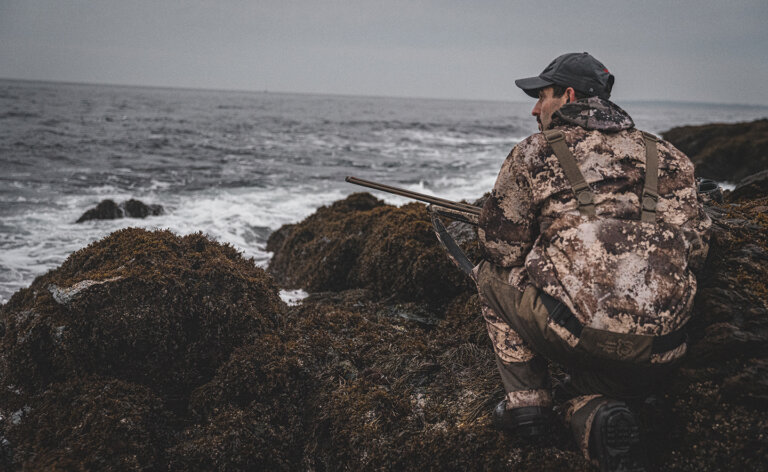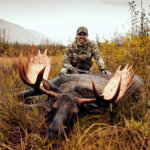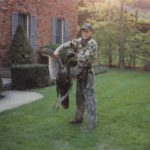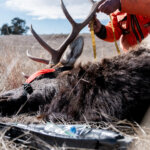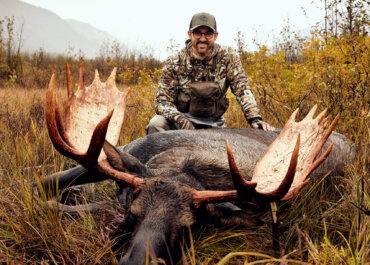From Kodiak, we returned home to Michigan for the end of archery deer season and to prepare our deer camp for rifle deer season. By late November, deer season had wrapped up and we were back on the road, focusing solely on the Waterfowl Slam. We flew from Michigan to Portland, Maine, where we rented an SUV and drove to the coastal island of Bailey Harbor, Maine. We met up with our friends, Emily and Lance Robinson, who had rented an Airbnb cabin for our group. Lance and Emily have been outfitting at Goose Haven and Safari River Outfitters in Saskatchewan for nearly ten years. They are great people and have the BEST lodges and BEST operations in the province for black bear, whitetail, and waterfowl hunting. Prior to all of the COVID closings, we had planned to start the Waterfowl Slam in Saskatchewan with Emily and Lance. When the border closed and they were unable to travel to Canada, they stayed in Maine near family with their new daughter, Brooke. Lance suggested we visit him in Maine to go after sea ducks. Both Lance and Emily grew up near Maine’s east coast, and Lance earned his captain’s license and learned his waterfowl techniques at Bailey Island.
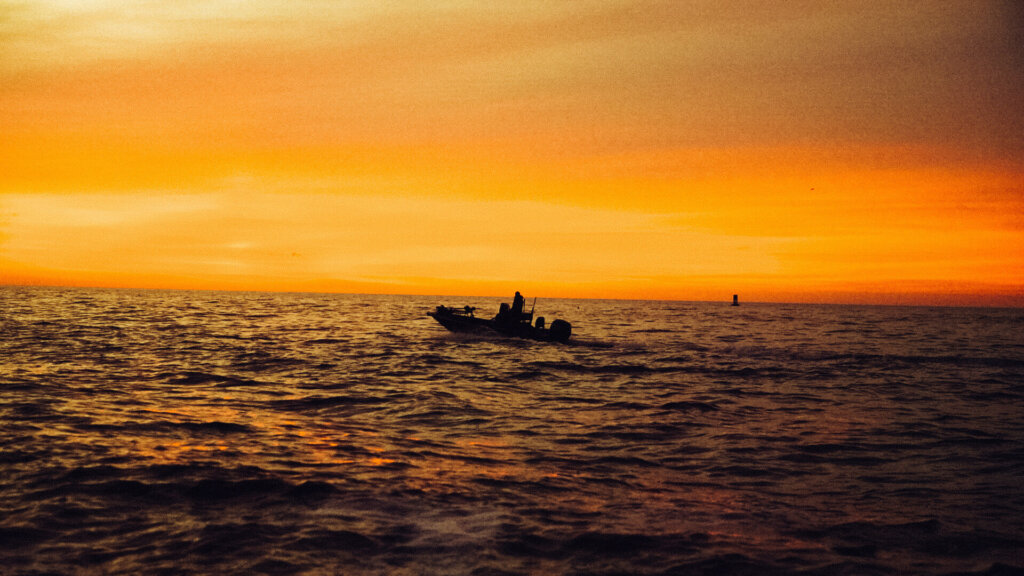
The boat launch was only a short distance from our Airbnb cabin. Our first morning in Maine, we were at the boat launch over an hour before daylight. Lance took us out of the harbor and set us up on a small island of rock outcroppings about half a mile outside of the harbor. The tide was coming in, but when we got there the waves were less than a foot high. There was a light wind hitting us in the face. Lance put out two strings of decoys and a couple of floating spinner decoys. He told us to be ready for daylight and took the boat around to the back side of the island so it was out of sight—he would come back around whenever he felt it was necessary to adjust the decoys or retrieve downed ducks.
My target ducks for Maine were Common Eider, Long-tailed (Old Squaw), White-winged Scoter, and, hopefully, we would find a Black Duck on an inland portion of a bay. Prior to this trip, I had gotten a new Browning Maxus II model Wicked Wing 12-gauge semiautomatic shotgun; this was a new model that Browning had just released, and I was excited to give it a try on sea ducks.
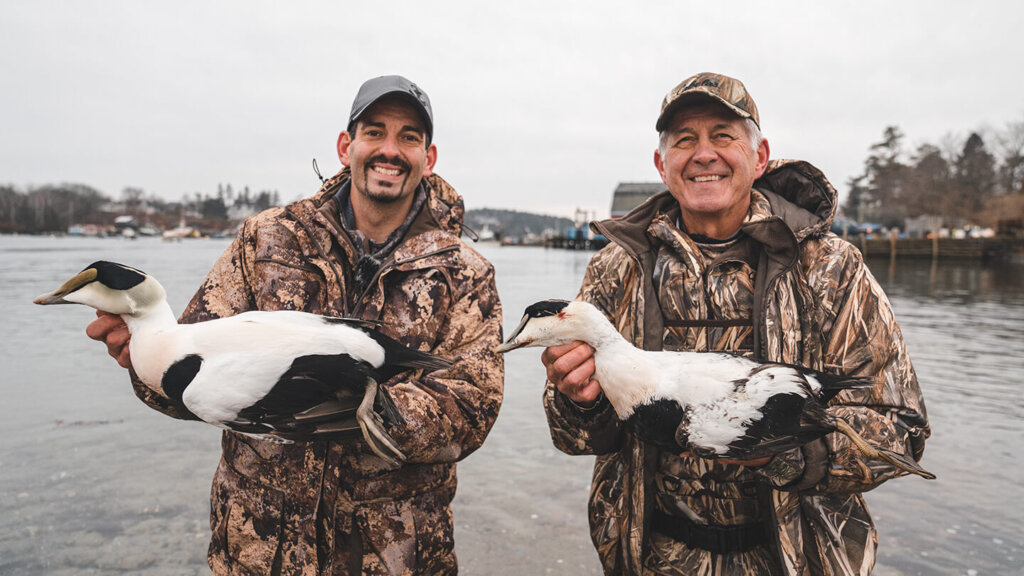
Within minutes of sitting down, we had legal shooting light and started seeing sea ducks. Many came screaming by out of range, but some turned toward us. Within minutes, a pair of Common Eiders came in left-to-right. I picked out the drake and dropped him—he was a fully colored, gorgeous bird. Soon after, a drake Long-tailed also came in left-to-right, and he fell as well. Two shots from the new Wicked Wing and two target ducks were down. I was really liking that Browning. Dad was banging away too and dropped a couple of Eiders.
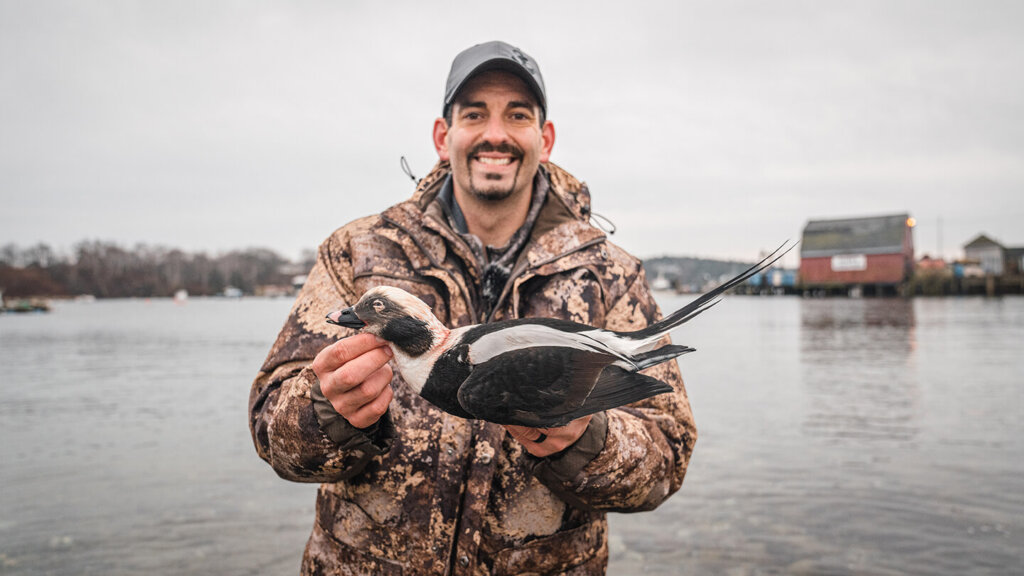
Lance heard the shots and came around to retrieve our ducks and make some adjustments to the decoys. The tide had moved higher and was splashing on our feet, so we moved higher up the rocks. Lance’s setup was perfect. As that first hunt continued, waterfowl kept coming by. I added a White-winged Scoter to my bag and later a hen Eider and another drake Eider. Dad dropped another duck, and I ended on a Ruddy Duck, which was a big surprise. At the end of morning one in Maine, three of my target ducks were down. That ocean hunt off of a rocky island was one of my top duck hunts ever.
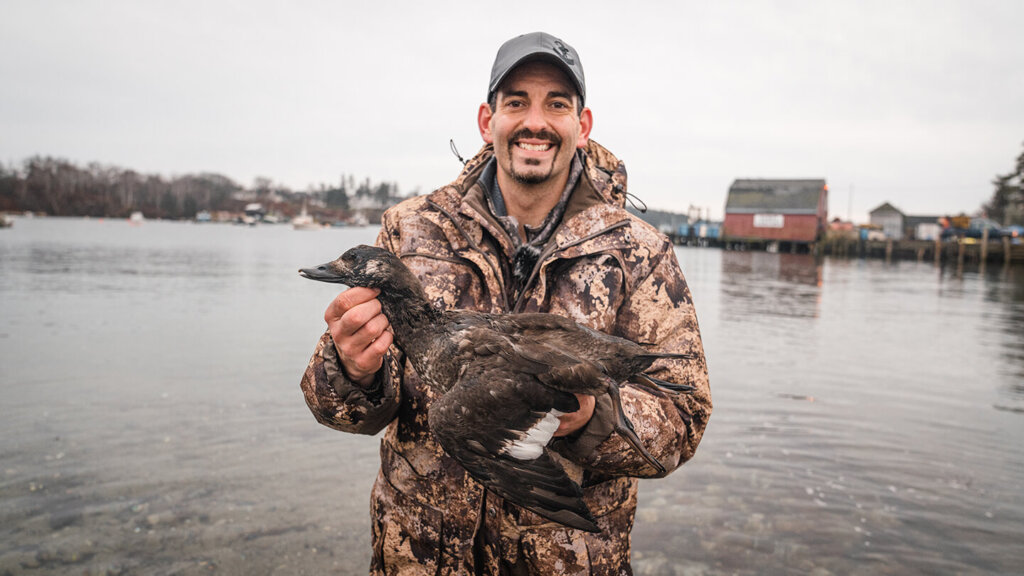
With the wind and waves picking up, we decided it was time to go back in for soup and sandwiches. The weather wasn’t looking good, as high winds were forecast for the remainder of the day, and unfortunately that high wind was also forecast to continue for a few additional days. By the time we finished lunch, the wind and waves had gotten to the point that it was impossible to go back out on the ocean. Lance drove us to a protected bay where he thought some ducks might be moving about. We moved out to the center of the bay where Lance turned off the motor, anchored, and ran out two strings of decoys. The wind was absolutely roaring. We spent a good bit of our time untangling our lines, and the only ducks we saw were in the far distance. After three hours, we headed back to the boat launch, loaded up, and drove back for the cabin to start drying our gear out. I have to say, I was disappointed I didn’t get to take a few more shots with my new Browning.
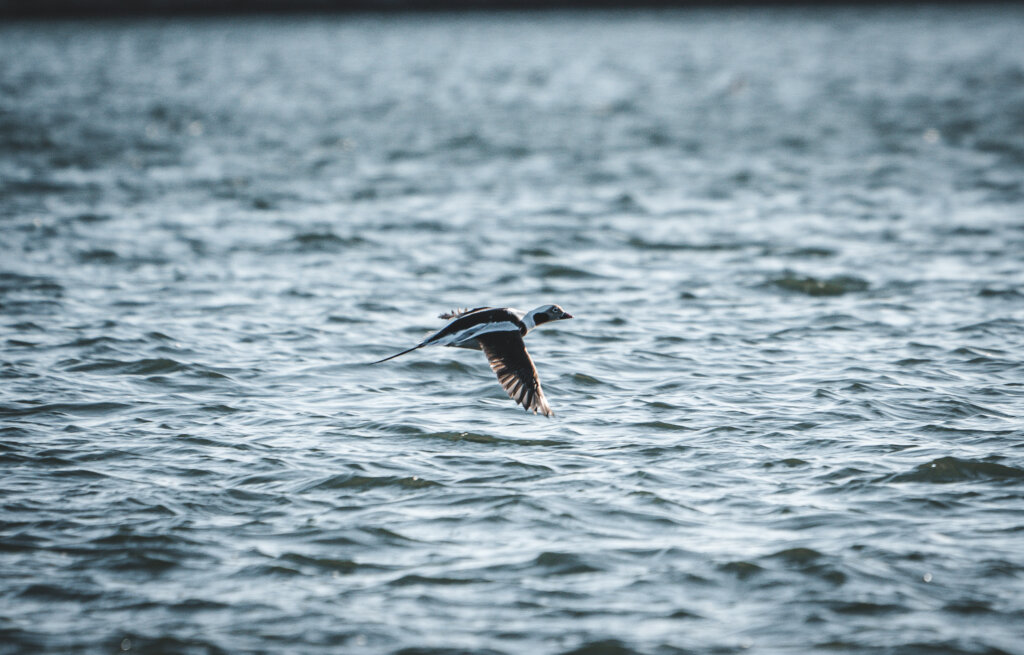
On our way to the cabin, we stopped in Bailey Harbor and picked up fresh lobster for dinner. The locals were busy tying down boats and preparing for the upcoming storm. The forecast was getting worse by the minute, as downed trees and electrical outages were now predicted.
As predicted, the storm had knocked out power. Lance, always prepared, brought out lanterns and a camp stove to finish off dinner. We ate lobster until we couldn’t eat any more and went to bed with the storm raging outside. It was somewhat disheartening knowing that my Maine hunt could be derailed by this storm, but I’ll admit, I was becoming used to the weather turning awful at each location of my Waterfowl Slam. Dad and I had persevered thus far, however—and I’d already checked three species off my list, bringing my total to nineteen of the forty-three species.
The wind was still roaring when we woke up the next morning. The rain continued, and the power was still out. We saw on our phones that trees had been knocked down in the area and utility crews had worked all night. There weren’t any great hunting options for us. Lance’s boat couldn’t be used, so his regular hunting spots weren’t an option. When he was in high school, Lance hunted a spot in an extremely protected bay and had helped build a blind on a point protected by large pine trees. He hadn’t used the blind for years, but it sounded like our best option. It was actually the only option Lance could think of, with the wind blowing the way it was. With a bit of work, we cleaned the blind up and waited. Unfortunately, the wind was wrong and no ducks came near us. We held out hope because we saw some flying in the distance. After several hours, we gave up and headed back to Bailey Harbor. We had a cold lunch and sat around talking.
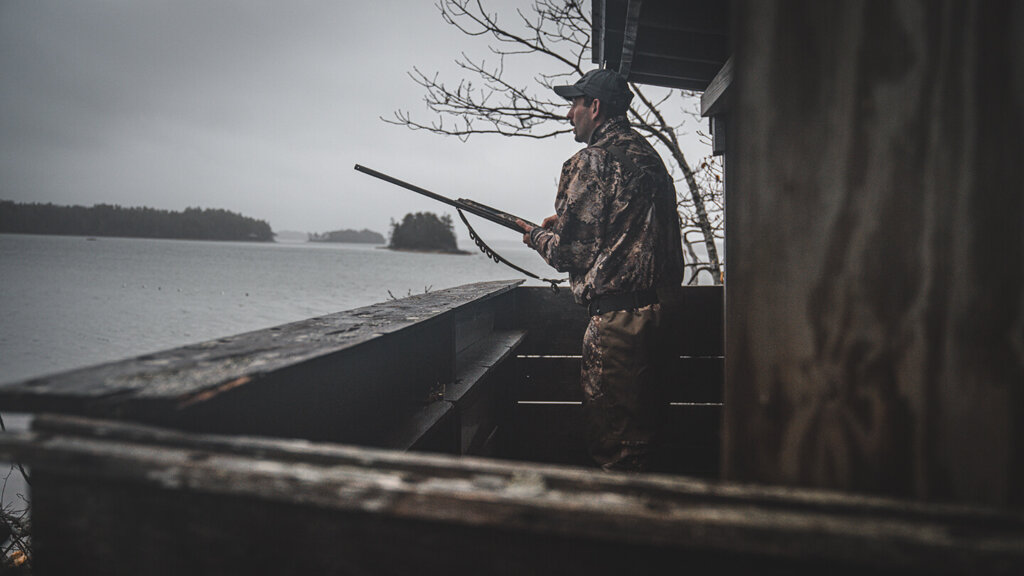
We sure wanted to go back to the rocky island. The wind had settled down a bit and the waves in the harbor near our cabin looked better. We decided to put Lance’s boat in and give it a try. Everything went well in the narrow part of the harbor. Once we got out in the open, everything changed. We had gotten out into bigger water where we could almost see the island. Bigger water meant bigger waves. It wasn’t very safe and a mutual decision was made—we all agreed that pressing on to the island was a bad idea. A successful Waterfowl Slam was important to me, but sometimes the risk is too great and it just isn’t worth it.
We returned to the cabin at the end of day two. No shots had been taken, so duck photos weren’t necessary. We did, however, spend the last couple hours of daylight drying our gear, putting our waders on dryers, and cleaning shotguns once again. We were a wet mess! On the bright side, the utility crew’s hard work and dedication had paid off and the electricity at the cabin was restored.
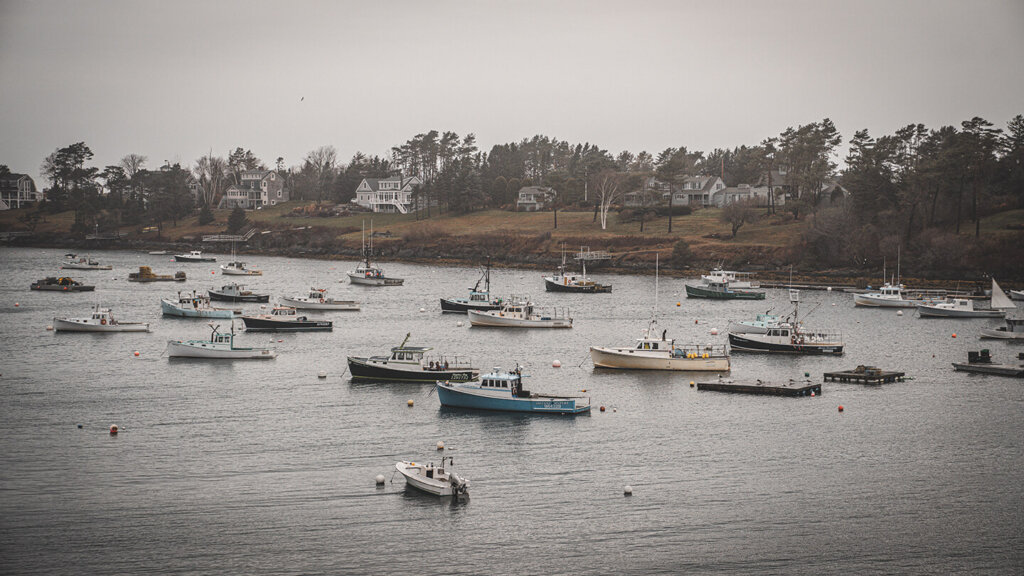
It was a relief on day three, our last day in Maine, to wake up with the power still on. The sky was overcast, but no rain was falling. The forecast called for winds at eighteen to twenty miles per hour, with gusts up to thirty. It still wasn’t safe to go back out to the small rocky island in the ocean, so Lance selected a smaller protected bay about fifteen miles away for us to hunt. When we got there, no one was at the boat launch, so it looked like we would be the only boat out hunting. Maine allows hunters to do a combined boat limit as opposed to individual limits. This makes a lot of sense because several hunters often shoot at the same group of ducks. We had three hunters, making our combined limit twelve ducks for the entire boat, rather than four ducks per hunter—extremely beneficial.
Lance moved out to the narrowest section of the long bay, dropped anchor as close to the center as possible, and set out two long decoy strings. The tide was going out, making our string of decoys look great. We were anchored in the perfect pinch point to catch Long-tailed Ducks whizzing back and forth. Within a matter of minutes, they came screaming by us as singles and in small groups, just within shotgun range. The shooting was fast and furious, and a LOT of fun. We only stopped momentarily to pull the decoys back in so we could go out and pick up our ducks. Once the ducks were in the boat, we moved back to the same spot, anchored, and again dropped the decoy strings. In addition to our boat limit of twelve Long-tailed Ducks, we were able to drop a Surf Scoter and a hen Common Eider.
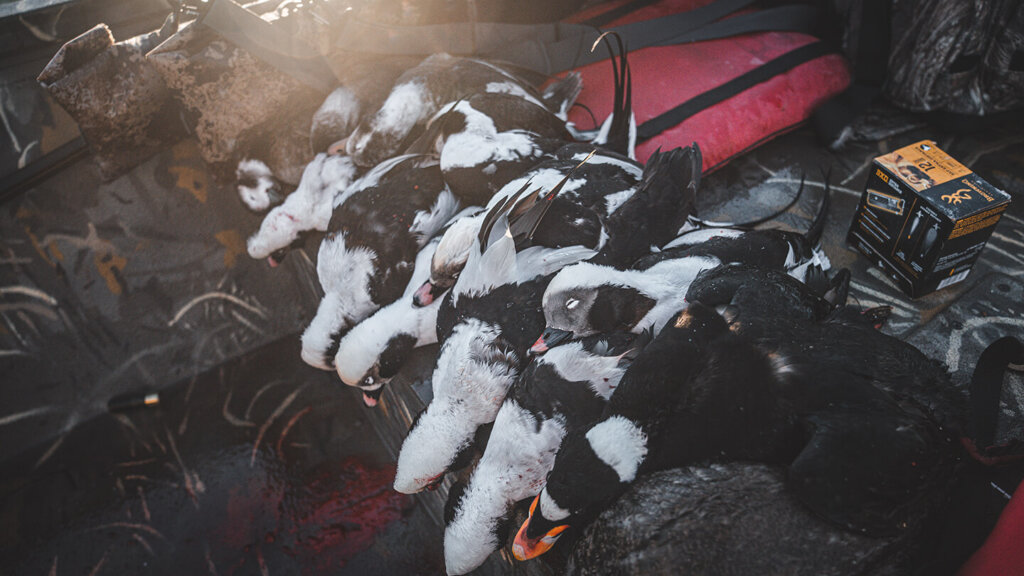
With 14 of our possible 15 sea ducks down, we decided to change our tactics. We pulled in the decoys and started looking for Black Ducks and Mergansers. These species would most likely be in the small fingers located along the narrow bay. As we’d pull into a finger, Lance would idle the boat and we’d use our binoculars to check for ducks. We saw good numbers of sea ducks, but were unable to hunt them. Back in the shallow water at the upper end of the bay, we finally spotted two Black Ducks. We anchored next to shore in the shade, where the finger met the bay. I was on the open-water side of the boat, where I’d be able to cover the largest area. We had to wait, but eventually the two ducks flew up and did a wide swing in my direction on their way out. I was able to bring one down. Those were the only Black Ducks we saw in Maine. We also saw some Mergansers and tried the same approach a couple times on them—but the fingers the Mergansers were in were wider, and when they got up, they held to the opposite edge of the finger. We tried some long shots, but unfortunately none dropped. All in all, thanks to the Black Duck and that morning’s boat limit of twelve Long-tailed Ducks, our third day in Maine was an epic day of hunting.
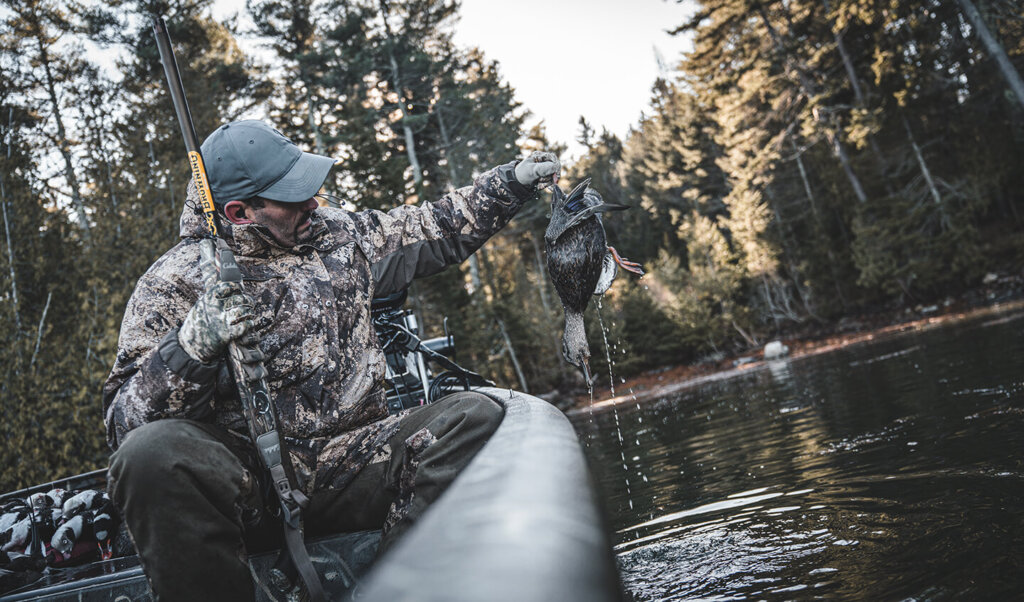
I was able to secure all four of my Maine target ducks, bringing my Waterfowl Slam total to twenty of forty-three. Poor weather had plagued all four hunts so far in the Slam. Storms kept hitting, either just before or during our hunts. Maine would have been very disappointing without our first morning on the rocky island in the ocean. I had quickly learned the major difference between the Waterfowl Slam hunts and the previous year’s Upland Slam hunts—weather is much more of a factor when hunting waterfowl.
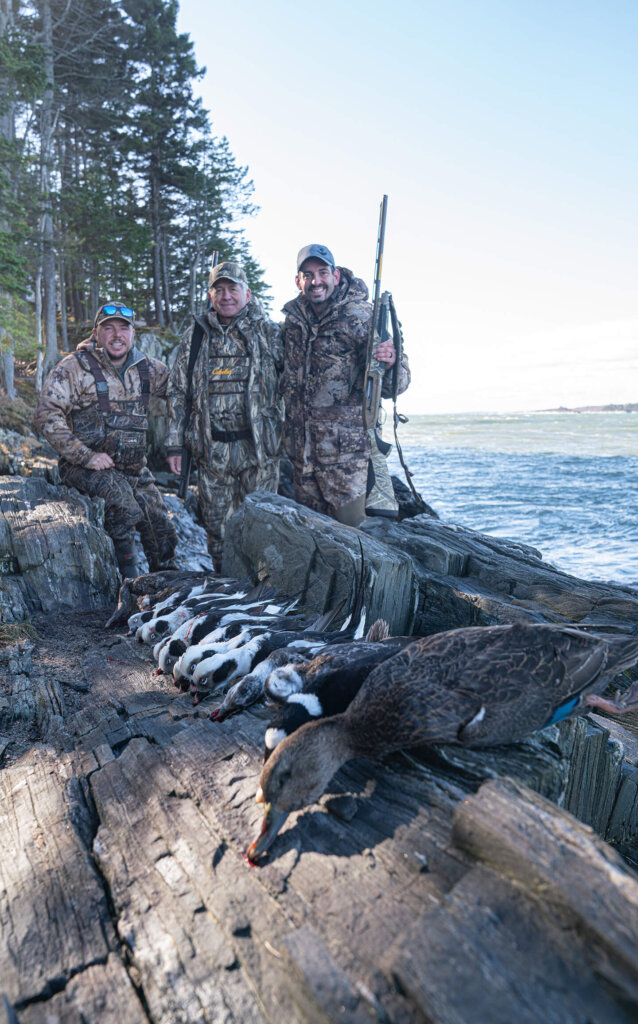
Next up was Sonora, Mexico. We had three days to return to Michigan, clean up, swap out our cold-weather gear for warm-weather gear, say hello and goodbye to the family, and get back on a plane for the next leg of the Waterfowl Slam.
